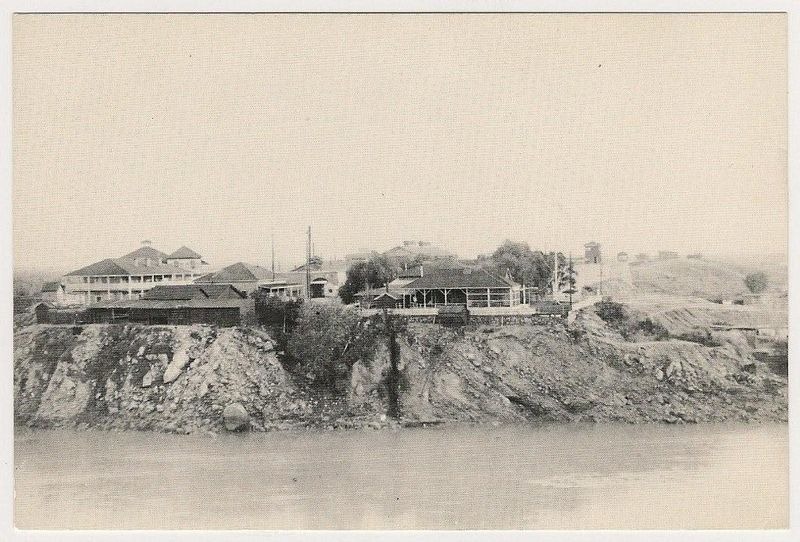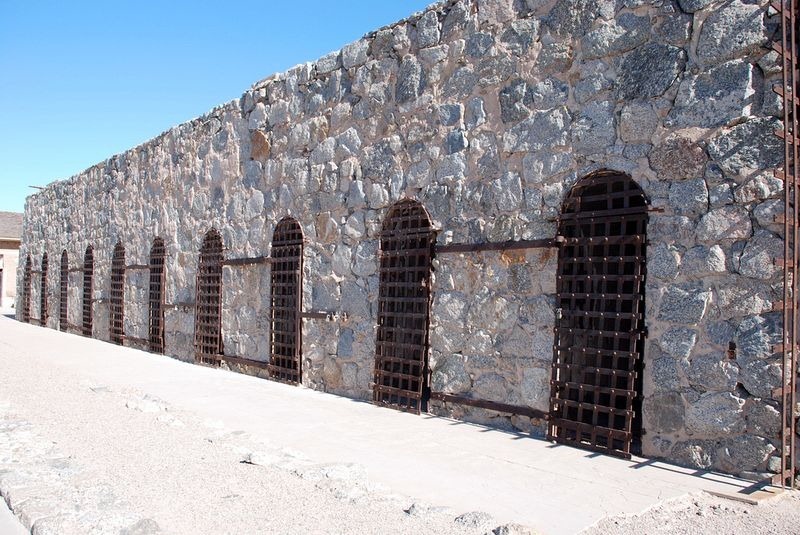Perched on top of a rocky hill overlooking the Colorado River, in the town of Yuma, in the far southwest corner of the state of Arizona, stand the ruins of the famous Yuma Territorial Prison. The penitentiary was founded in 1876 to lock away the most dangerous felons including murderers, bandits, cattle rustler, drug traffickers and gamblers that roamed lawlessly in this remote corner of the wild west. During its 33 years of operation, a total of 3,069 prisoners, including 29 women, from 21 different countries lived within these walls. These included, aside from hardened criminals, people convicted of odd crimes such as polygamy, seduction, obstructing a railroad, and selling liquor to Indians.
The prison opened for duty on July 1, 1876, when the first seven inmates walked through the gates and were locked into the new cells they had built themselves. Most of the cells were dug out into the side of the hill. The walls were plastered with adobe mud. The exterior wall surrounding the prison was 18 feet high, and averaged 8 feet in thickness at the bottom and 5 feet at the top. A guard stood watch at the main tower with a four-barrel Lowell battery gun which had a firing capacity of 600 rounds a minute with an accuracy up to 300 meters Despite this, twenty six convicts escaped and were never caught.
The most feared place inside the prison was “the dark hole”, a cave measuring 15 x 15 feet, dug into a rock hill, with a strap iron cage in the middle. The “hole” was used for solitary confinements. Prisoners infracting prison rules were thrown into the pitch black hole for several days at a stretch and fed bread and water a couple of times a day. Those trying to escape were punished by being chained to heavy iron balls.
Summer temperatures often soared over the 115-degree mark, while the desert nights were bitter cold. Inmates also had to deal with cockroaches, black widow spiders, scorpions and persistent bedbugs.

An undated photograph of the Yuma Territorial Prison. Photo credit
Several old time western movies, dime novels and even modern popular western novels have featured this place. These work of fiction gave the Yuma Territorial Prison much notoriety. Despite the infamy, the Yuma Territorial Prison was a model institution which had many amenities like a library, an excellent hospital and an electrical generator that was used for lighting and powering blowers that circulated air through the cell blocks at night. Being located next to the river, there was always a cool breeze blowing.
A majority of prisoners served only portions of their sentences due to the ease with which paroles and pardons were obtained. One hundred eleven persons died while serving their sentences, but mostly from tuberculosis, which was common throughout the territory. A few died from gunshot wounds when they tried to escape.
The prison eventually closed in 1909 due to over crowding, and a high school moved in from 1910 to 1914. After the school left, the prison fell into disrepair as locals began scavenging it for building materials. During the depression, the empty cells provided shelter to many hobos and homeless families.
The prison is now a state historical park and a must visit for anyone who is a fan of the old west. It is operated as a museum containing many prison artifacts made by prisoners, several of the weapons used by the guards, and a theater providing information on the prison.
Other than the picnic table the entrance to Yuma Territorial Prison looks exactly the same as it did when it closed in 1909. Photo credit

The terrifying solitary confinement “dark cell”. Photo credit
Inside view of the “dark cell”. Photo credit
The guard tower. Photo credit
Sources: Desert USA / Western Americana / Eugene Register-Guard - Jul 27, 1980 / LA Times






















Comments
Post a Comment